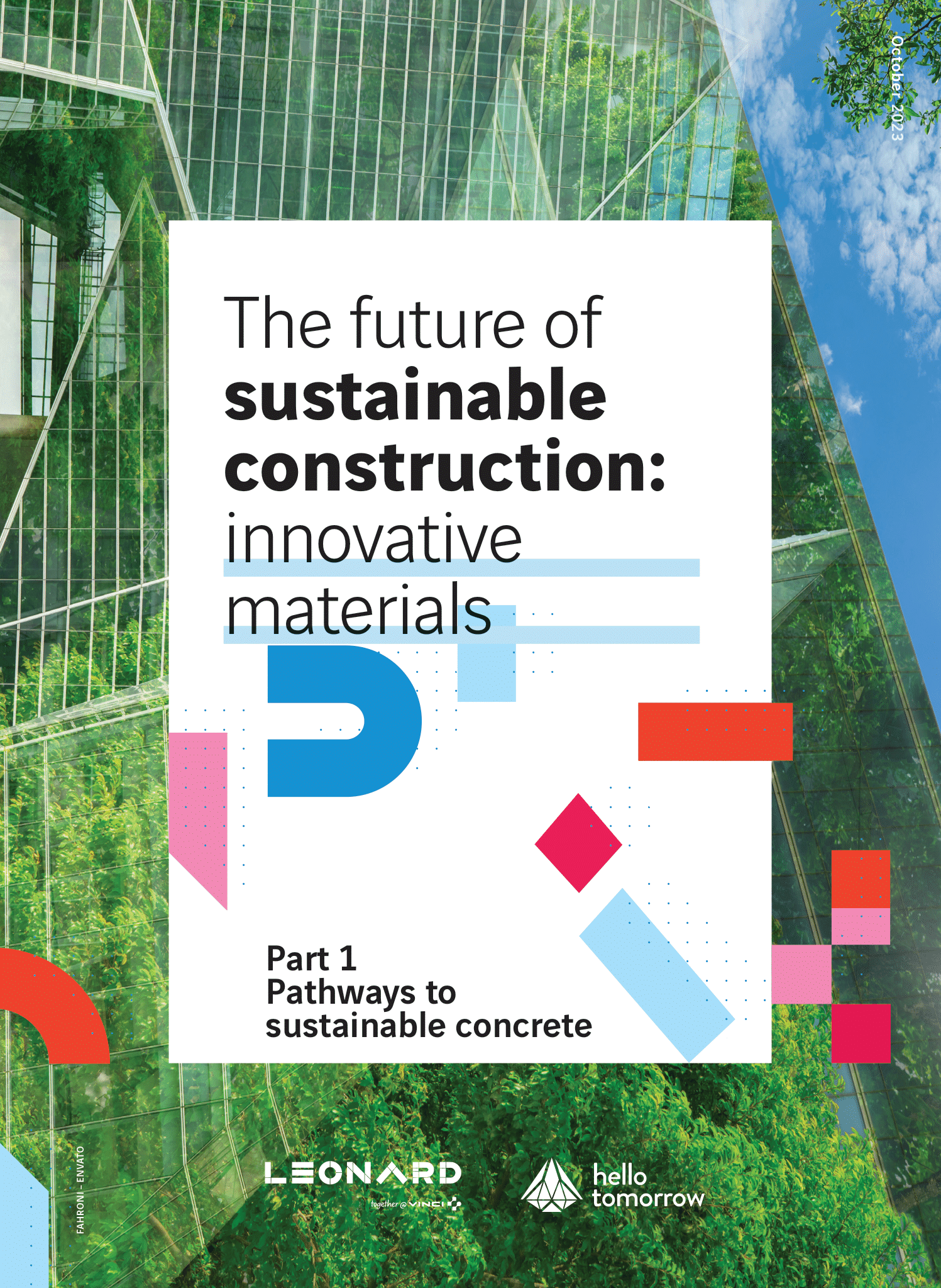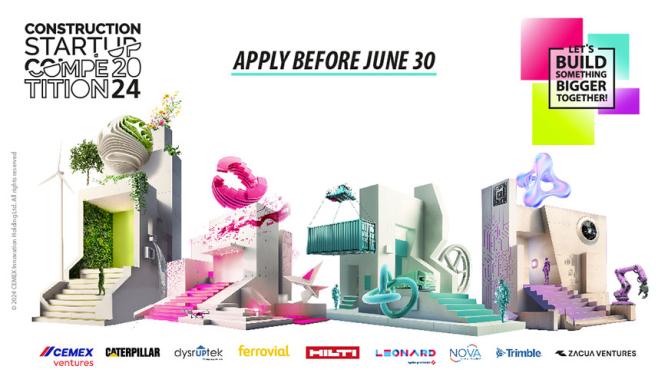To mark the publication of a new report on the decarbonisation of construction, Leonard and Hello Tomorrow are organising two events on the subject. The first was held on 27 October on the theme: “Low carbon, ultra low carbon. When concrete reinvents itself”. The event brought together Pierre Anjolras, President of VINCI Construction, Antonio Castro Neto, co-founder of UrbaX, Julie Neuville, co-founder and chief impact officer of Materrup, Juan Nieto, founding partner of Zacua Ventures and Bruno Paul-Dauphin, director of EXEGY low-carbon concrete solutions at VINCI Construction. The event was moderated by Kevin Cardona, Director of Entrepreneurial Innovation at Leonard.
What role do low-carbon materials play in construction today? In view of the sector’s carbon neutrality objectives, this is an important question, especially given that concrete alone accounts for around 8% of world global CO2 emissions. However, the reduction or even substitution of clincker in cement, alternatives in terms of binders and carbon sequestration are levers on which it is already possible to act to reduce CO2 emissions.
Many barriers to be removed
However, there are barriers to the adoption of these new solutions, as Antonio Castro Neto, co-founder of UrbaX, a Singapore-based company that designs and manufactures new-generation, low-carbon construction materials, points out: “For any new technology, you have to convince the industry to change the way it does things, and that takes time. But this barrier to entry should be lifted quickly as a result of pressure from the regulatory environment and public opinion”. In the case of Materrup, a technology platform for the production of cement from raw clay, removing these barriers requires method and determination: “first we had to get people to accept the very idea of a deeptech working on clay”, notes Julie Neuville, co-founder and chief impact officer of Materrup, “then we had to move from the POC stage to the industrialisation stage and finally mass-market the solution via partnerships”. For Juan Nieto, founding partner of Zacua Ventures, “our role as investors is precisely to enable these new solutions to reach the market”.
Sometimes positive constraints
Bruno Paul-Dauphin, director of EXEGY low-carbon concrete solutions at VINCI Construction, has also had to overcome a number of obstacles: “firstly, the barriers posed by standards, which took us five years to overcome, then access to resources and the structuring of the sector for limestone filler and metakaolin in our case, and finally the challenge of transforming worksite habits, as we have to adapt to the specific constraints of low-carbon concrete”. However, some constraints can be positive. “The RE2020 [2020 French construction sector environmental regulations], for example, is a formidable accelerator for Materrup, as it encourages the use of low-carbon concrete in practice. And the thresholds are going to be raised again from 2025″, Julie Neuville points out, “so the legislation is proving to be a catalyst that can unite the stakeholders throughout the chain”.
Sequestering CO2
Solutions also exist for sequestering carbon in the material. In this area, “the question is still how to do it at an affordable cost”, notes Antonio Castro Neto. But new initiatives are now making it possible to go even further in CO2 sequestration. “Mature companies are already offering carbon curing solutions,” notes Bruno Paul-Dauphin, “but this type of solution is limited to just 20 kg of CO2 per m3. So it would be interesting to work on clincker substitution as well. Cement manufacturers have already started to decarbonise their clincker process with CO2 sequestration units at source, which will be in service from 2027-2028”.
So low-carbon concrete is well and truly a reality. “And that’s good news,” says Pierre Anjolras, President of VINCI Construction. “At VINCI Construction, concrete represents a volume of 10 million m3, so it’s an essential part of our Scope 3. We have three levers for action to meet the challenge of decarbonisation: using less material, diversifying materials and partnerships”. The challenge is all the more crucial in that concrete’s remarkable characteristics make it a material that will remain essential in the world of construction for a long time to come.
Don’t miss the second event in this series, on 22 November at 7pm, on the theme of the superpowers of new materials. Register now!











